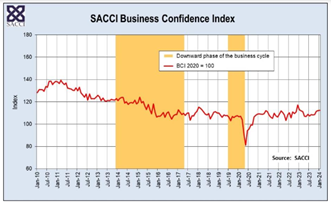The construction industry has contributed 2.7% to this country’s overall gross domestic product (GDP) despite its challenges. However, the industry continues to grapple with the following challenges: shortage of skilled labour, public sector capacity to deliver infrastructure projects, loadshedding, slow adoption of technology, business confidence in South Africa, and construction mafias.
Shortage of skilled labour
In recent years, the construction industry has experienced a shortage of skilled workers. The shortage of skilled workers is one of the factors affecting the success and growth of the construction industry. The demand for skilled labour continues to outstrip the supply due to the growth in infrastructure investment.
The construction industry is affected by a mismatch between available construction workers and required skills, which leads to skilled immigrants being hired over unskilled nationals. This shortage of skilled labour in key construction trades has led to project delays and longer completion times, reduced quality of work, higher labour costs, and lowered client satisfaction within the construction sector.
Closing the skills gap is crucial for meeting growth targets. This calls for both the private and public sectors to invest in structured training programs to contribute to the creation of a pool of critical skills.
This challenge can also be addressed through improved and inclusive procurement practices that will empower and uplift small and medium enterprises (SMMEs). SMMEs play a significant role in the South African economy, contributing to job creation, economic growth, and poverty alleviation. SMMEs contribute 40 percent of the GDP, and they span various sectors in construction, manufacturing, services, and agriculture. They are also crucial for promoting inclusive economic development.
Public sector capacity to deliver infrastructure projects
The public sector’s capacity to deliver infrastructure has been a topic of discussion and concern. In the South African public sector, capacity is a key constraint in achieving sustainable growth in the construction industry.
Challenges include bureaucratic inefficiencies, budget constraints, skills shortages, and corruption. There is a limited number of experienced personnel to deliver public sector infrastructure.
The lack of built environment professionals within the Supply Chain Management unit, whose scope of professional practice includes procurement, leads to delayed delivery of construction projects. Efforts to improve public sector capacity will have to include reforms, partnerships with the private sector, and investments in skills development and technology.
Load-shedding
The country’s inability to generate sufficient electricity has affected economic growth. Persistent load-shedding has threatened the growth of the construction industry.
The construction industry relies heavily on electricity to generate power for machinery during construction and also for the production of materials. Loadshedding has thus disrupted work schedules, caused delays, increased costs, and forced contractors to reschedule their projects. Loadshedding has caused instability and unreliability of power, which has resulted in decreased investor confidence and hindered businesses throughout value chains.
Slow adoption of technology
The construction sector has been slow in adopting new technology and can no longer afford to delay its adoption due to the potential of technology to grow the industry. The slow adoption of technology in the South African construction industry could be attributed to various factors, such as:
- Lack of awareness: There is a lack of awareness among many construction companies of the latest technological advancements or their potential benefits and returns on investment, which may affect the adoption of technology.
- Cost: Implementing new technologies often requires significant financial investment, which may deter SMMEs from adopting them, especially in a market where profit margins may already be tight.
- Infrastructure challenges: Inadequate infrastructure, such as limited access to high-speed internet or power outages, may inhibit the implementation of technology-driven solutions.
- Resistance to Change: Some stakeholders within the industry may resist the adoption of new technologies due to a preference for traditional methods.
- Shortage of skilled personnel: the lack of skilled personnel who are knowledgeable about implementing and utilizing construction technology effectively may deter its adoption.
Business confidence in South Africa
Business confidence in the South African construction sector has been fluctuating due to various factors such as economic conditions, political stability, government policies, and infrastructure investment. The South African Chamber of Commerce and Industry (SACCI) released the Business Confidence Index (BCI) for December 2023, which was 112.1, the second highest in 2023 after the January level of 112.9. The average level for the BCI for both 2022 and 2023 has been 109.6. This was followed by the January 2024 level of 112.3, which may suggest a reasonable sustainable level of business confidence despite several economic challenges facing South Africa.

A reasonable sustainable level of business confidence for the construction industry might mean a steady demand for construction projects, a stable investment outlook, consistent access to financing, and a positive economic environment. This may foster growth, encourage investment in new projects, and allow construction companies to plan and execute projects with confidence, leading to a stable and thriving industry.
Construction mafias
The construction mafia is a growing threat to the South African construction industry. These are criminal syndicates that pretend to be local business forums, which are making it difficult for many construction companies to operate. They claim to represent the interests of the unemployed and the marginalized.
These construction mafias infiltrate and demand a share of construction projects, often leading to intimidation, vandalism, arson, theft, and violence. Construction mafias have been causing delays, losses, and risks to the safety and quality of construction projects in South Africa. Government and law enforcement agencies often work together to combat their influence by prosecuting those involved in such activities.
In conclusion, addressing these challenges will require collaborative efforts from the government, industry stakeholders, and the community to create a conducive environment for sustainable growth in the construction industry.












